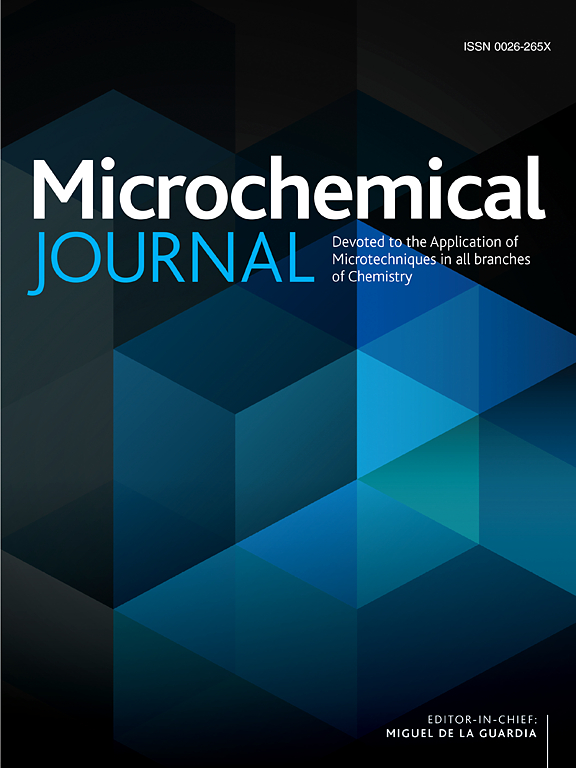Covalently post-synthesized modified metal-organic framework UiO-66-HJA for the selective and sensitive turn-on detection of Al3+ and its application in hybridized film and bioimaging
IF 4.9
2区 化学
Q1 CHEMISTRY, ANALYTICAL
引用次数: 0
Abstract
The synthesis of a novel fluorescent sensor (UiO-66-HJA) for Al3+ ions involved grafting 8-Hydroxyjulolidine-9-carboxaldehyde (HJA) onto a Zr(IV)-based metal organic framework (UiO-66-NH2) through a Schiff base reaction. The resulting functionalized UiO-66-HJA maintained its structural integrity and exhibited excellent thermal and chemical stability during the post-synthetic modification process. Optical investigations revealed that the sensor exhibited high selectivity towards Al3+ ions, demonstrating a remarkable detection limit of 0.26 μM. Furthermore, the low cytotoxicity of UiO-66-HJA allowed for successful imaging of Al3+ ions in SiHa cells, demonstrating remarkable biocompatibility and cell membrane permeability. For on-site monitoring purposes, UiO-66-HJA-hybridized polyvinyl alcohol composite films were prepared and effectively utilized for visual detection of Al3+ ions in real samples. These results collectively highlight the potential of post-modification on MOFs as a promising tool for both in vitro and in vivo detection of Al3+ ions.

共价后合成修饰金属-有机骨架UiO-66-HJA选择性灵敏开启检测Al3+及其在杂交膜和生物成像中的应用
采用希夫碱反应将8-羟基julolidin -9-carboxaldehyde (HJA)接枝到Zr(IV)基金属有机骨架(UiO-66-NH2)上,合成了一种新型Al3+荧光传感器(UiO-66-HJA)。在合成后的修饰过程中,得到的UiO-66-HJA保持了结构的完整性,并表现出良好的热稳定性和化学稳定性。光学研究表明,该传感器对Al3+离子具有较高的选择性,检测限为0.26 μM。此外,UiO-66-HJA的低细胞毒性使得Al3+离子在SiHa细胞中成功成像,显示出卓越的生物相容性和细胞膜通透性。为现场监测目的,制备了uio -66- hja杂化聚乙烯醇复合膜,并将其有效地用于实际样品中Al3+离子的视觉检测。这些结果共同强调了mof的后修饰作为体外和体内检测Al3+离子的有前途的工具的潜力。
本文章由计算机程序翻译,如有差异,请以英文原文为准。
求助全文
约1分钟内获得全文
求助全文
来源期刊

Microchemical Journal
化学-分析化学
CiteScore
8.70
自引率
8.30%
发文量
1131
审稿时长
1.9 months
期刊介绍:
The Microchemical Journal is a peer reviewed journal devoted to all aspects and phases of analytical chemistry and chemical analysis. The Microchemical Journal publishes articles which are at the forefront of modern analytical chemistry and cover innovations in the techniques to the finest possible limits. This includes fundamental aspects, instrumentation, new developments, innovative and novel methods and applications including environmental and clinical field.
Traditional classical analytical methods such as spectrophotometry and titrimetry as well as established instrumentation methods such as flame and graphite furnace atomic absorption spectrometry, gas chromatography, and modified glassy or carbon electrode electrochemical methods will be considered, provided they show significant improvements and novelty compared to the established methods.
 求助内容:
求助内容: 应助结果提醒方式:
应助结果提醒方式:


